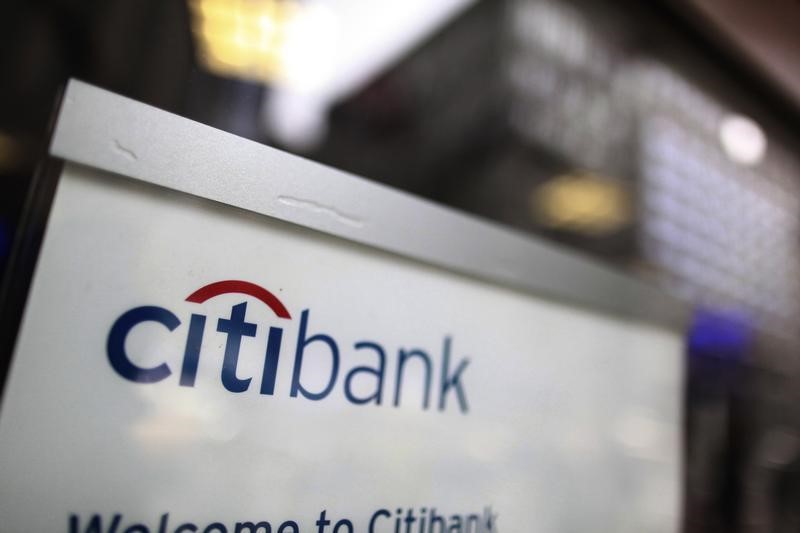(Bloomberg) -- Beleaguered US regional banks are assessing whether bond sales to replace lost deposits are worth the cost, as credit investors weigh whether they’re worth the risk.
The arrival of quarterly bank earnings reports on Friday has spurred speculation on which financial institutions will brave an unpredictable bond market. Average corporate note yields jumped above 6% in the past 12 months and still remain above 5%, more than a percentage point higher than the year-ago period.
Commercial bank deposits have shrunk for the last 10 weeks, as consumers and companies have moved cash into higher-yielding assets like money market funds, with smaller lenders getting hit harder. Some banks may need to sell bonds to replace any lost funding, which usually boosts overall financing costs. But not all lenders will be equally needy.
The six largest US banks historically are the biggest debt sellers. But JPMorgan Chase & Co. (NYSE:JPM) analysts say the firms’ issuance likely will be around $11 billion to $14 billion, a relatively muted level because they have ample funding.
For regional banks, the story may be different. They’ve faced deposit withdrawals that led to the collapse and takeover of Silicon Valley Bank and a few others, and may not have as much extra funding.
“The treasurers at those institutions will be looking at their (bond yield) spreads,” Nicholas Elfner, co-head of research at Breckinridge Capital Advisors, said in an interview. “If they want to issue term debt, they’re going to come at a concession to the Big Six because of what we’ve seen over the last month.”
April is usually the second-busiest month for big bank bond sales, with post-earnings offerings “averaging 15% of annual supply since 2014,” according to a report by JPMorgan analysts Kabir Caprihan and Nikita Dyatlov on Tuesday.
Bond offerings from the six biggest US firms — Bank of America Corp (NYSE:BAC)., Citigroup Inc (NYSE:C)., Goldman Sachs Group Inc (NYSE:GS)., JPMorgan, Morgan Stanley (NYSE:MS) and Wells Fargo (NYSE:WFC) & Co. — totaled $24 billion in the days after earnings in April 2022. Morgan Stanley and Bank of America issued $9 billion of new debt combined soon after posting results in January, usually the group’s biggest issuance period.
Financial institutions account for about 38% of new issuance so far this year, according to data compiled by Bloomberg News. At this time last year, banks made up about 52% of total new issuance and the lion’s share came from the big six US banks.
“We expected issuance to fall, but not off a cliff,” Arnold Kakuda, Bloomberg Intelligence senior financials credit analyst, said in an interview. “With the events of the past few weeks, the spreads have widened overall, especially in the bank sector. So any new issuance that does come up will be more expensive obviously.”
The rising cost of debt is likely to keep some banks, especially some of the largest ones, on the sidelines.
‘Wild Card’
The same can’t be said of the regional banks, which the JPMorgan analysts called “the wild card.” They didn’t provide a specific forecast for bond sales.
Regional banks in recent months have already started issuing more long-term bonds to meet regulatory requirements and to bolster them against market shocks. The US banking system as a whole is about 80% funded by deposits, and the exodus of deposits since the SVB collapse in March is causing concern for regulators.
“Large US banks have seen $393 billion of outflows from core deposits in the 13 weeks ended March 29, based on Federal Reserve data, while transfers to more costly deposit funding are $146 billion, for a net outflow of $247 billion,” according to a report on Thursday by Alison Williams, Bloomberg Intelligence senior bank analyst and Ravi Chelluri, associate bank analyst.
The next line of the BI report holds particular significance for potential bond investors. “Shifts occurred between large and small banks, industry data show, and 1Q results will give insights as to trends at particular banks,” according to the report.
In the week after reporting earnings in January, a series of regional banks sold bonds, carrying much of the issuance from financials. Market participants wonder what sort of investor reception awaits regional banks this month.
“Higher quality banks will be the first to tap the market and this is where credit quality and ratings particularly matter,” said Elfner. “Now, if you’re a treasurer at a second-tier bank, you may not want to issue at levels you think are unattractive from a cost of capital perspective, if you’re confident that your other funding sources are plentiful.”
Earnings Focus
Citigroup, JPMorgan and Wells, generally posted better-than-expected results on Friday, helped by factors including a surge in lending profits as measured by net interest income. JPMorgan Chief Executive Office Jamie Dimon said that rates will be higher for longer than some may expect, but that the number of troubled banks is relatively small.
PNC Financial (NYSE:PNC), a “super regional” bank, also posted better-than-expected results. Next week, along with the remaining three big banks, a series of large regional banks, like US Bancorp (NYSE:USB) and KeyCorp (NYSE:KEY), report earnings.
“All eyes will be on results to get any indication about liquidity stress, credit tightening, cost of funding, asset quality weakness and funding needs,” JPMorgan’s Caprihan and Dyatlov said in their Tuesday note.
©2023 Bloomberg L.P.
